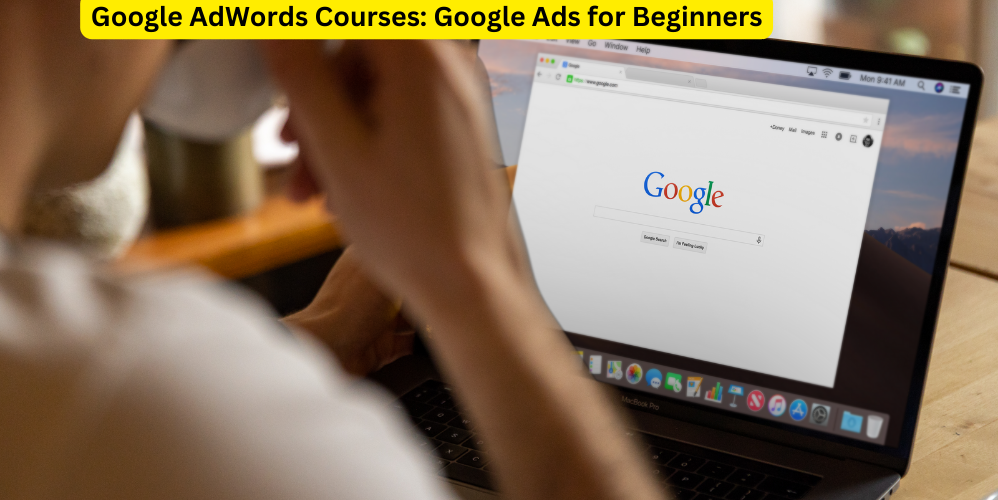Google Ads for Beginners: A Comprehensive Guide
Google Ads is a powerful online advertising platform that allows businesses of all sizes to reach their target audiences through search engines, websites, and mobile apps. As a beginner, understanding how Google Ads works and how to effectively use it can seem overwhelming. However, with the right guidance, you can leverage Google Ads to drive traffic, generate leads, and grow your business. This guide will provide a comprehensive overview of Google Ads, including its structure, key features, and best practices for getting started.
What is Google Ads?
Google Ads, formerly known as Google AdWords, is an online advertising service developed by Google. It allows businesses to create and display ads on Google’s search engine results pages (SERPs), as well as on other websites and apps that are part of the Google Display Network. Google Ads operates on a pay-per-click (PPC) model, meaning that advertisers only pay when a user clicks on their ad.
Key Components of Google Ads
Understanding the key components of Google Ads is essential for creating effective campaigns. Here are the main elements:
1. Campaigns
A campaign is the highest level of organization in Google Ads. It represents the overall advertising strategy and can include multiple ad groups. Campaigns are usually organized by the type of product or service being advertised, the geographic location of the target audience, or specific goals (such as brand awareness or lead generation). Each campaign has its own budget and settings.
2. Ad Groups
Within each campaign, there are ad groups. Ad groups contain a set of related ads and keywords. They help you organize your ads by themes or topics, making it easier to manage and optimize your campaigns. Ad groups allow you to target specific audiences with relevant ads, improving the overall effectiveness of your campaigns.
3. Keywords
Keywords are the terms or phrases that users type into Google when searching for information. In Google Ads, keywords are used to match your ads with relevant search queries. Selecting the right keywords is crucial for ensuring that your ads appear to users who are interested in your products or services. You can use tools like Google’s Keyword Planner to research and choose effective keywords.
4. Ads
Ads are the actual messages that users see when they search for keywords related to your business. Google Ads supports various ad formats, including text ads, image ads, video ads, and more. Each ad should be compelling and relevant to the keywords and target audience to maximize its effectiveness.
5. Bids
In Google Ads, bidding determines how much you are willing to pay for a click on your ad. You can set bids manually or use automated bidding strategies. The bid amount, along with other factors such as ad quality and relevance, influences where your ad appears in the search results or on other sites.
6. Quality Score
Quality Score is a metric used by Google to measure the relevance and quality of your ads and keywords. It is based on factors such as the click-through rate (CTR), ad relevance, and landing page experience. A higher Quality Score can lead to better ad placements and lower costs per click.
7. Landing Pages
Landing pages are the web pages users are directed to after clicking on your ad. A well-designed landing page is crucial for converting visitors into customers. It should be relevant to the ad content, easy to navigate, and optimized for user experience.
Setting Up a Google Ads Campaign
Setting up a Google Ads campaign involves several steps. Here is a step-by-step guide to help you get started:
1. Create a Google Ads Account
To start using Google Ads, you need to create an account. Go to the Google Ads website and sign in with your Google account. Follow the prompts to set up your account, including entering your business information and billing details.
2. Define Your Goals
Before creating your campaign, it’s important to define your goals. What do you want to achieve with your ads? Common goals include driving website traffic, generating leads, increasing sales, or boosting brand awareness. Your goals will help guide your campaign settings and ad strategies.
3. Choose Your Campaign Type
Google Ads offers several campaign types, each suited for different goals and advertising needs. The main types are:
- Search Campaigns: Display ads on Google’s search results pages based on user queries.
- Display Campaigns: Show ads on websites and apps within the Google Display Network.
- Video Campaigns: Display video ads on YouTube and other video platforms.
- Shopping Campaigns: Promote products with ads that appear on Google Shopping and search results.
- App Campaigns: Advertise mobile apps across Google’s networks.
Choose the campaign type that aligns with your goals and target audience.
4. Set Up Ad Groups and Keywords
Within your campaign, create ad groups and select keywords related to your business. Use keyword research tools to find relevant terms and phrases that your target audience is likely to search for. Organize your ad groups by themes or product categories to keep your ads focused and relevant.
5. Create Your Ads
Design compelling ads that capture users’ attention and encourage them to click. Write clear and persuasive ad copy, include relevant keywords, and use strong calls to action. Choose the appropriate ad format based on your campaign type and objectives. For example, text ads for search campaigns or image ads for display campaigns.
6. Set Your Budget and Bids
Determine your budget for the campaign and set your bids for keywords. You can choose a daily budget that controls how much you spend each day, and set bids for individual keywords or ad placements. Google Ads offers automated bidding strategies that can help you optimize your bids based on your goals.
7. Launch Your Campaign
Review your campaign settings, ads, and keywords to ensure everything is set up correctly. Once you’re satisfied, launch your campaign. Google Ads will start displaying your ads based on your settings and target audience.
8. Monitor and Optimize
After launching your campaign, it’s important to monitor its performance regularly. Use Google Ads’ reporting tools to track key metrics such as clicks, impressions, click-through rate (CTR), and conversions. Based on the data, make adjustments to improve your campaign’s effectiveness. This may include refining your keywords, adjusting bids, or testing different ad variations.
Best Practices for Google Ads
To maximize the effectiveness of your Google Ads campaigns, follow these best practices:
1. Conduct Thorough Keyword Research
Effective keyword research is crucial for targeting the right audience and improving ad performance. Use tools like Google Keyword Planner to identify high-performing keywords relevant to your business. Consider factors such as search volume, competition, and user intent when selecting keywords.
2. Write Compelling Ad Copy
Your ad copy should be clear, concise, and engaging. Highlight the unique selling points of your products or services and include a strong call to action. Make sure your ad copy is relevant to the keywords and matches the content of your landing page.
3. Optimize Landing Pages
A well-optimized landing page can significantly impact your conversion rates. Ensure that your landing page is relevant to your ad content, loads quickly, and provides a seamless user experience. Include clear calls to action and relevant information to encourage visitors to take the desired action.
4. Use Ad Extensions
Ad extensions enhance your ads by providing additional information and options for users. Google Ads offers various ad extensions, such as site link extensions, call extensions, and location extensions. Using ad extensions can improve your ad’s visibility and click-through rate.
5. Monitor Performance and Adjust Bids
Regularly review your campaign performance and make data-driven adjustments. Monitor key metrics such as CTR, conversion rate, and cost per conversion. Adjust your bids and budget based on the performance of your keywords and ads to optimize your return on investment.
6. Test and Experiment
A/B testing is a valuable strategy for improving your ad performance. Test different ad variations, keywords, and bidding strategies to see what works best for your audience. Experimenting with different approaches can help you identify the most effective tactics for achieving your goals.
7. Leverage Remarketing
Remarketing allows you to target users who have previously interacted with your website or ads. By showing ads to users who have already expressed interest in your products or services, you can increase the likelihood of conversions and reinforce your brand message.
8. Stay Informed and Adapt
Google Ads is a dynamic platform with frequent updates and changes. Stay informed about new features, best practices, and industry trends to keep your campaigns current and effective. Regularly review Google Ads’ help resources and participate in training opportunities to enhance your skills and knowledge.
Conclusion
Google Ads is a powerful tool for reaching potential customers and achieving your business goals. By understanding its key components, setting up effective campaigns, and following best practices, beginners can leverage Google Ads to drive traffic, generate leads, and increase sales. With careful planning, continuous monitoring, and optimization, you can maximize the impact of your Google Ads campaigns and achieve success in the competitive online advertising landscape. Whether you’re a small business owner or a marketing professional, mastering Google Ads can significantly enhance your digital marketing efforts and contribute to your overall business growth.

